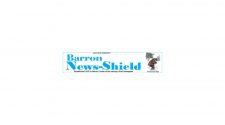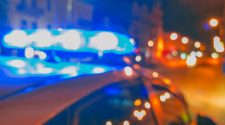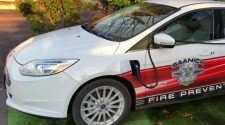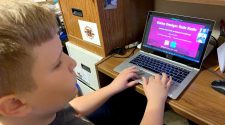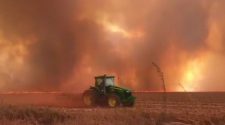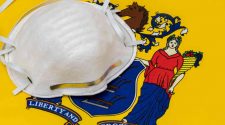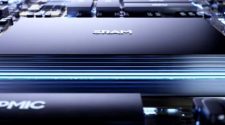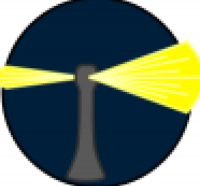CHICAGO, IL – On Northwestern University’s sprawling campus, down a long corridor in the school’s Technological Institute, Josiah Hester is practicing safe social distancing as part of a small engineering team working on the front lines of a technology war against the COVID-19 pandemic.
Detecting potential COVID-19 cases is labor-intensive and often intrusive. Hester’s team hopes to change that.
“We’re working on what you call smart PPE, so smart personal protective equipment,” Hester explained to VOA inside his small workspace. “You can think of this as face masks with tiny sensors in them to detect all kind of things, such as symptoms of COVID, to fatigue, to even, ‘Does this mask fit on my face? Am I wearing it properly?'”
He’s part of a team creating something from scratch with plans to mass produce it in months, not years.
“Once we engineer enough where it could be deployed in a very, very large batch, the economies of scale would bring (the cost of) this way down,” Hester said.
On the other side of the technological institute, John Rogers isn’t just designing wearable sensors, he’s manufacturing them right in his lab on Northwestern’s campus.
“The devices that we develop have physical form factors very similar to those of a Band-Aid, so we can really place them on any part of the anatomy so we aren’t constrained to the wrist,” Rogers, an engineer and professor of neurosurgery, as well as bioelectrics, explained to VOA from his bustling laboratory.
“And I have one of the devices on right now,” Rogers added, pointing to the white object on his throat. “It sits on the base of the neck right above the collar bone. We initially developed this device to measure speech and swallowing activity in stroke survivors.”
Evolving system
As concern over coronavirus exposure spreads through the health care community, Rogers and his team adapted the device to meet the challenges of the moment.
“This system could be tailored to monitor the key respiratory symptoms associated with COVID-19, which are shortness of breath and coughing.”
In under three weeks, Rogers’s team modified the device and deployed it in two Chicago-area medical facilities.
Working with Naresh Shanbhag, a professor of electrical and computer engineering at the University of Illinois Urbana-Champaign, Rogers’ device incorporates machine-learning algorithms that analyze data collected and uploaded by the sensors, including oxygen levels, chest wall movements and any coughing — all useful information for doctors assessing whether someone has COVID-19.
“I think we have on order about 30 devices (to be) deployed so far,” said Rogers. “We’ll probably double that number up over the next week or two, and hope to have 100 to 200 deployed by the end of the month.”
Growing demand
He said he expects demand for the devices will grow.
“There’s a time pressure and there’s an urgency. But as engineers you love that — you are all about problem-solving,” he said. “We’re in a number of different conversations with companies who want to deploy these devices on their employees, so they can sort of track their employee health.”
Which presents the next set of challenges — ramping up production.
“We also have spin-up companies that serve as a vehicle for sort of a broader commercially oriented deployment that allows us to hit levels of scale that we can’t reach with philanthropy and foundations and federal research grants,” Rogers said.
Researchers say the swift development of wearable sensors tailored to a pandemic reinforces how a major crisis can accelerate innovation.
“I think it’s really opened people’s eyes to what’s possible, in terms of modern technology in that context,” Rogers said.
As Hester works to reduce the size of his PPE sensor, he says he is keenly aware of the impact of his work on monitoring the virus, and ultimately saving lives.
“The scientific challenge and scientific impact you can have is definitely turning this into a moonshot,” Hester said. “No matter what, we’ll end up with a lot of science later on that could be helpful later on in building these kinds of devices.”
Researchers hope their efforts spawn new technology and applications that could have a lasting benefit beyond the health care sector, well after the COVID-19 pandemic ends.


